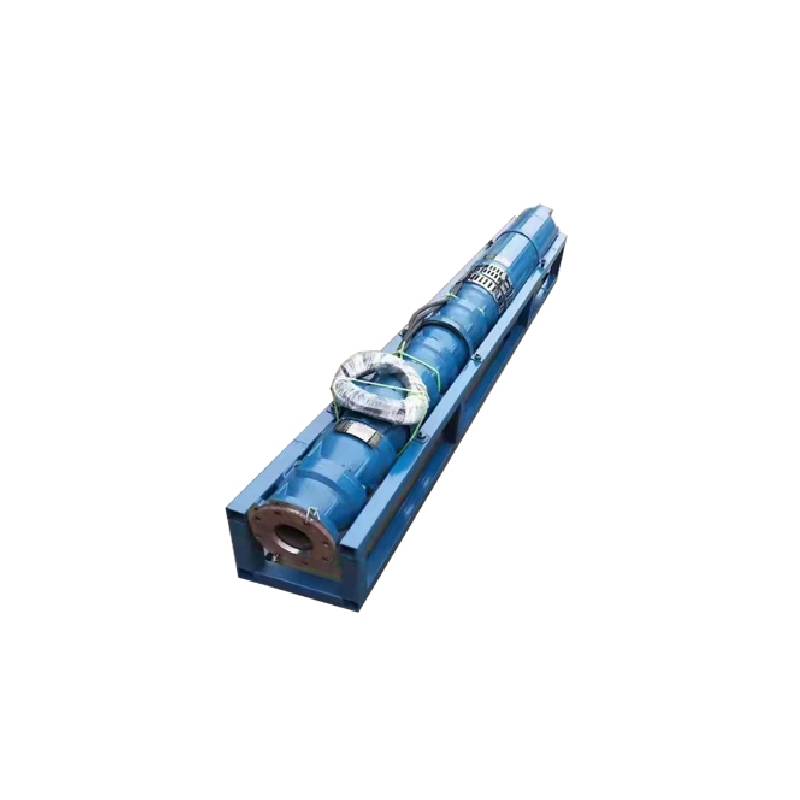Nov . 06, 2024 18:57 Back to list
Common Issues with Submersible Water Pumps and Their Effective Solutions
Problems and Solutions for Submersible Water Pumps
Submersible water pumps are widely used in various applications, including residential, agricultural, and industrial settings. While these machines are highly effective in moving water from lower to higher elevations, they can encounter several issues that hinder their performance. This article addresses some common submersible water pump problems and suggests potential solutions.
Common Problems
1. Overheating One of the most prevalent issues with submersible water pumps is overheating. This can occur if the pump is running continuously without adequate cooling, especially in shallow water conditions. Overheating can cause damage to the motor and lead to pump failure.
2. Clogging Submersible pumps often operate in environments where debris, mud, and other solids can enter the system. This can lead to clogging, which decreases efficiency and can even cause the pump to stop working altogether.
3. Electrical Failures Electrical issues can arise due to poor wiring, moisture intrusion, or insufficient power supply. These problems can disrupt the functioning of the pump and may result in complete operational failure.
4. Not Pumping Water Sometimes, a submersible pump may fail to draw water, which can result from a variety of causes such as air leaks, a blocked inlet, or an improperly installed unit.
5. Vibration and Noise A submersible pump may also produce excessive vibration and noise, indicating mechanical issues such as unbalanced components or misalignment. This not only affects the pump’s longevity but can also damage surrounding infrastructure.
submersible water pump problems and solutions

Solutions
1. Preventing Overheating To prevent overheating, it is crucial to ensure that the pump is installed at a sufficient water depth. This allows for adequate cooling while in operation. Additionally, implementing a timer to limit continuous use can help in reducing the risk of overheating. Regular maintenance checks are also essential for identifying and resolving potential problems before they escalate.
2. Clearing Clogs To address clogging, it is advisable to regularly inspect and clean the pump's inlet and surrounding areas. Installing a pre-filter or strainer can help minimize debris entering the pump. If clogs occur, powering down the pump and carefully removing the obstruction using appropriate tools can resolve the issue.
3. Electrical Maintenance For electrical failures, conducting routine inspections of the wiring and connections is critical. Ensure that all electrical components are waterproof and that the power supply meets the pump's voltage requirements. In the case of persistent electrical problems, consulting a qualified electrician is recommended to avoid further complications and ensure safety.
4. Addressing Pumping Issues For pumps that fail to draw water, first check for any air leaks in the discharge line and ensure that the inlet is not blocked. If the pump is not properly submerged, adjust its position to ensure it operates at the correct depth. If issues persist, it may be necessary to examine the pump for any internal damage or defects.
5. Minimizing Vibration and Noise To reduce vibrations and noise, regularly check that the pump is securely mounted and that all components are aligned correctly. If excessive noise continues, a thorough examination of the impeller and motor may be needed to identify imbalances or wear and tear.
Conclusion
Submersible water pumps are invaluable tools for effective water management in various applications. However, like any machinery, they may encounter problems that can affect their performance and longevity. By understanding common issues such as overheating, clogging, electrical failures, and others, and by implementing the suggested solutions, users can maintain their pumps in optimal working condition, ensuring reliable and efficient operation for years to come. Regular maintenance and timely troubleshooting are key to prolonging the life of submersible water pumps and preventing costly repairs.
-
Submersible Water Pump: The Efficient 'Power Pioneer' of the Underwater World
NewsJul.01,2025
-
Submersible Pond Pump: The Hidden Guardian of Water Landscape Ecology
NewsJul.01,2025
-
Stainless Well Pump: A Reliable and Durable Pumping Main Force
NewsJul.01,2025
-
Stainless Steel Submersible Pump: An Efficient and Versatile Tool for Underwater Operations
NewsJul.01,2025
-
Deep Well Submersible Pump: An Efficient 'Sucker' of Groundwater Sources
NewsJul.01,2025
-
Deep Water Well Pump: An Efficient 'Sucker' of Groundwater Sources
NewsJul.01,2025
-
 Submersible Water Pump: The Efficient 'Power Pioneer' of the Underwater WorldIn the field of hydraulic equipment, the Submersible Water Pump has become the core equipment for underwater operations and water resource transportation due to its unique design and excellent performance.Detail
Submersible Water Pump: The Efficient 'Power Pioneer' of the Underwater WorldIn the field of hydraulic equipment, the Submersible Water Pump has become the core equipment for underwater operations and water resource transportation due to its unique design and excellent performance.Detail -
 Submersible Pond Pump: The Hidden Guardian of Water Landscape EcologyIn courtyard landscapes, ecological ponds, and even small-scale water conservancy projects, there is a silent yet indispensable equipment - the Submersible Pond Pump.Detail
Submersible Pond Pump: The Hidden Guardian of Water Landscape EcologyIn courtyard landscapes, ecological ponds, and even small-scale water conservancy projects, there is a silent yet indispensable equipment - the Submersible Pond Pump.Detail -
 Stainless Well Pump: A Reliable and Durable Pumping Main ForceIn the field of water resource transportation, Stainless Well Pump has become the core equipment for various pumping scenarios with its excellent performance and reliable quality.Detail
Stainless Well Pump: A Reliable and Durable Pumping Main ForceIn the field of water resource transportation, Stainless Well Pump has become the core equipment for various pumping scenarios with its excellent performance and reliable quality.Detail
